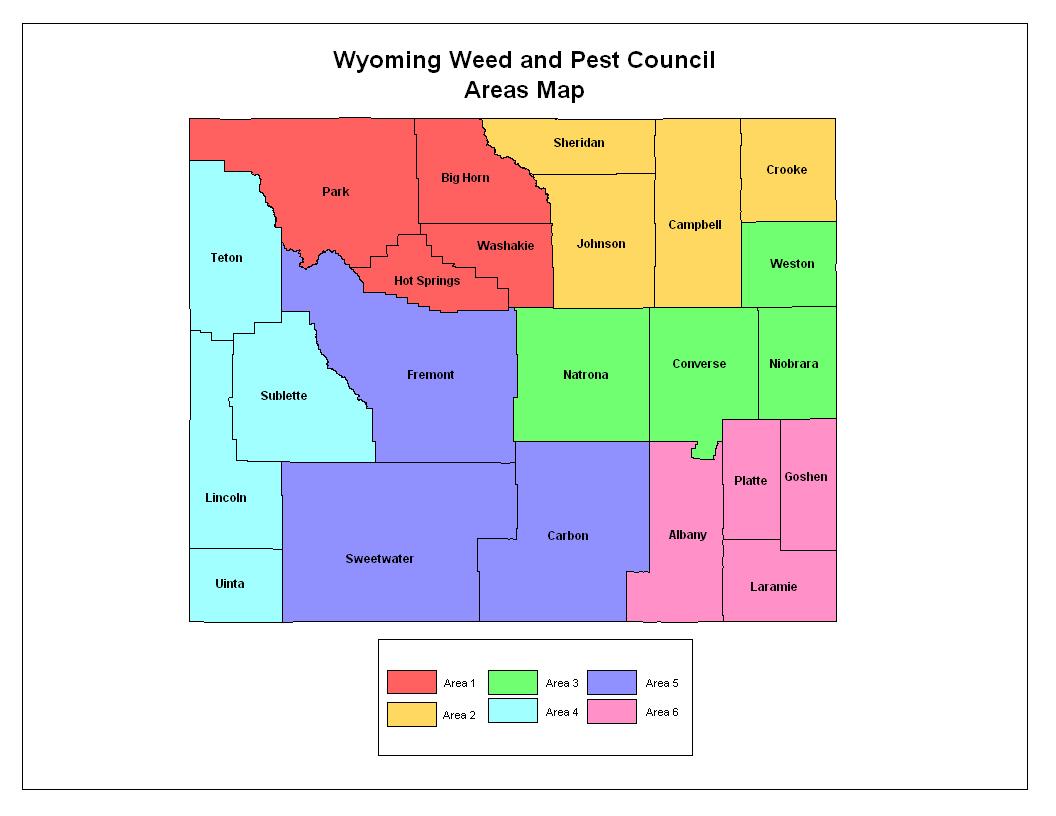
The Wyoming Weed & Pest Council is comprised of the 23 Weed & Pest Districts in the state, associated with the boundaries of each County. The existence of the WWPC is allowed for by law under the Wyoming Weed & Pest Control Act, Chapter 5 (11-5-101). Each District is permitted one delegate, who is approved in writing by each District Board, to vote on matters that come before the Council. The voting delegate may be a District Board member, or an employee of the District.
The districts are designed to serve the public and are primarily financed by local tax dollars. Depending on the County in which the District is located, a certain percentage of each district’s program is financed by taxes and the remainder is financed by other revenue, including:
- Custom service with private cooperators
- Contracts or Cooperative Agreements with state and federal agencies
- Pesticide sales
- State appropriated funds
- Grant funds
Each district is geared to meet specific weed or pest needs in the county. The districts offer:
- Technical assistance to set up a weed or pest management program using integrated management.
- Cost-share programs which reduce the cost of managing certain weeds or pests. These programs vary from district to district; check with your district supervisor for details and availability of cost-share programs in your county (designed by the District Boards).
- Special programs may be established to meet specific local needs. If the problem is significant, some weed or pest species may be classified by law as “declared”.
- Provide an inspection service to attest your fields meet Wyoming Certification Standards and certify the resulting forages are certified weed-free.
- Tap the resources of the Wyoming Weed and Pest Council, the University of Wyoming, the Wyoming Department of Agriculture, and various other federal, state, and private organizations.
Although actual daily operations are site-specific to local conditions, the general goals and operating procedures are similar for all Districts statewide.
Each district strives to achieve the best management with minimal environmental damage by employing Integrated Management Systems that take into consideration:
- The most efficient and effective methods
- Scientific evidence and current technology
- Physiology and habitat of the site
- The economic, social, and ecological consequences of the program
- The economic considerations

